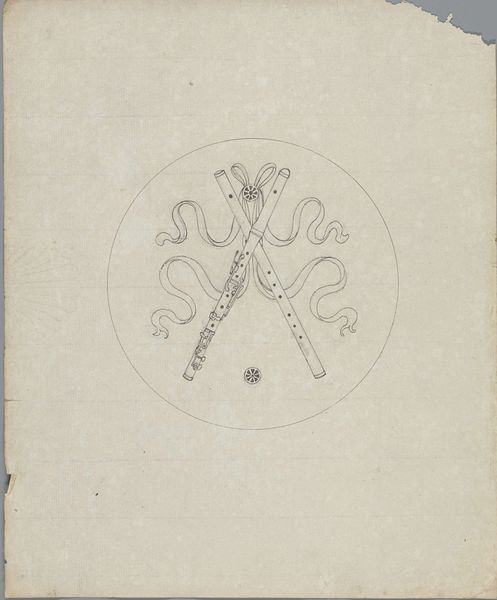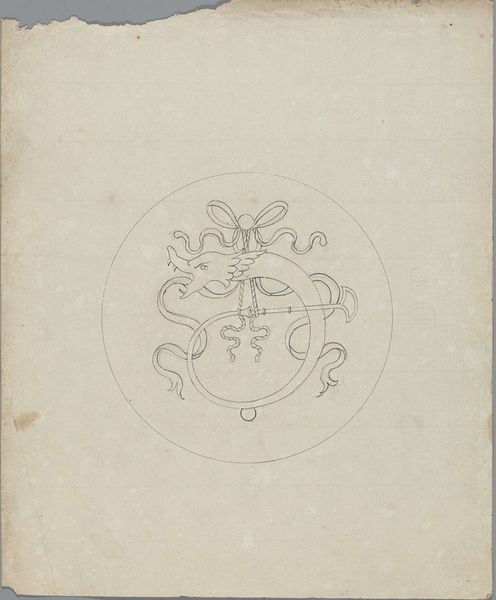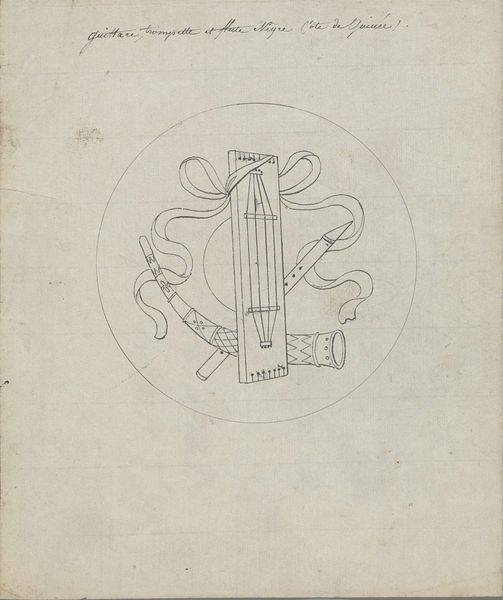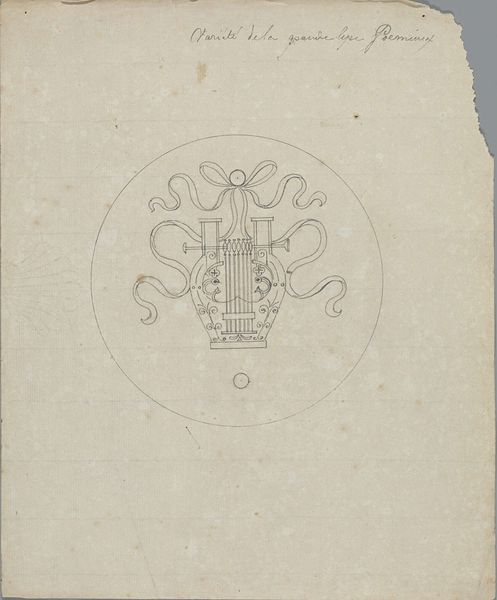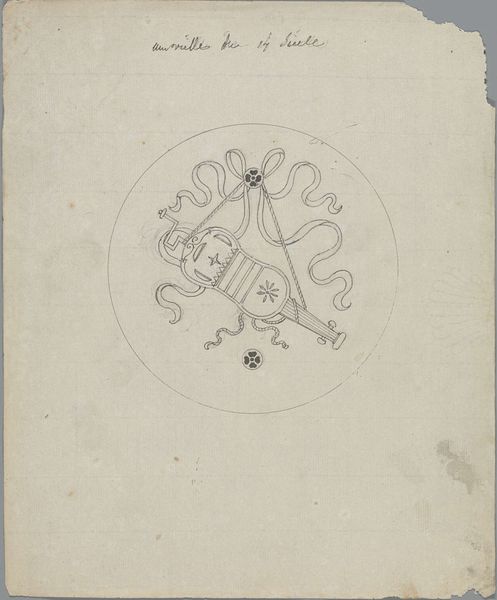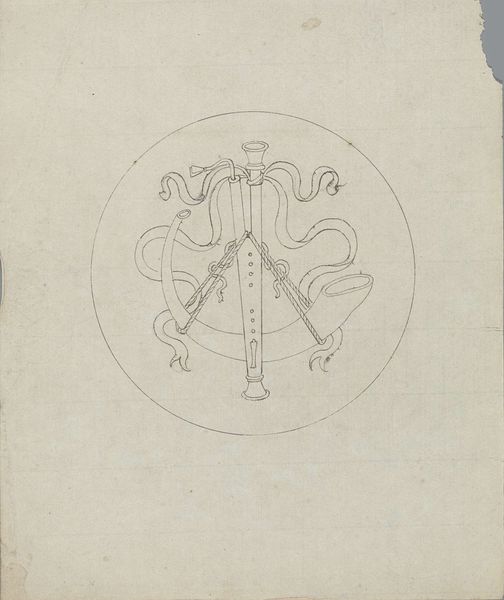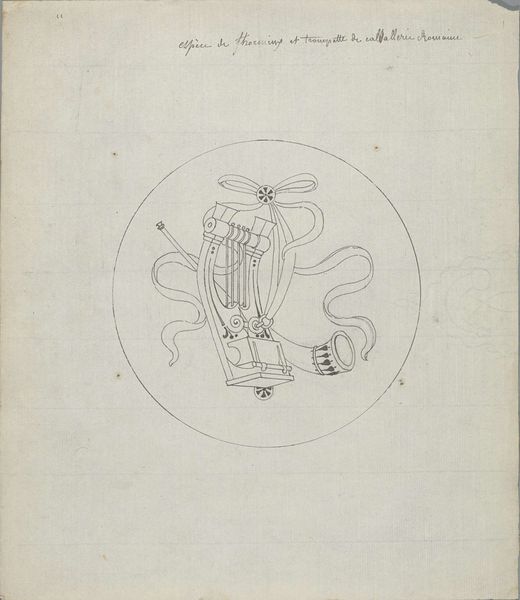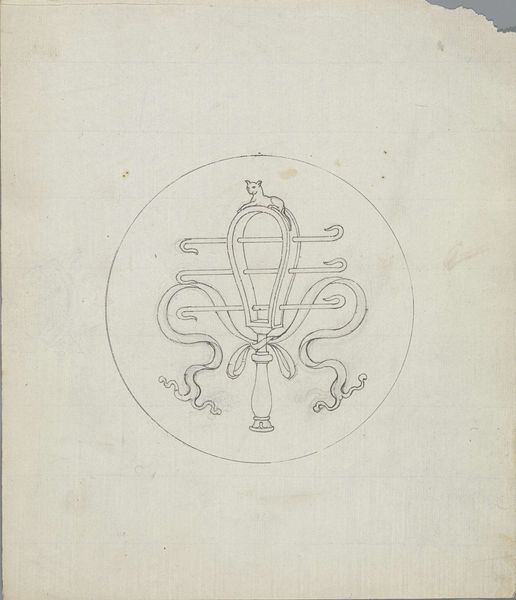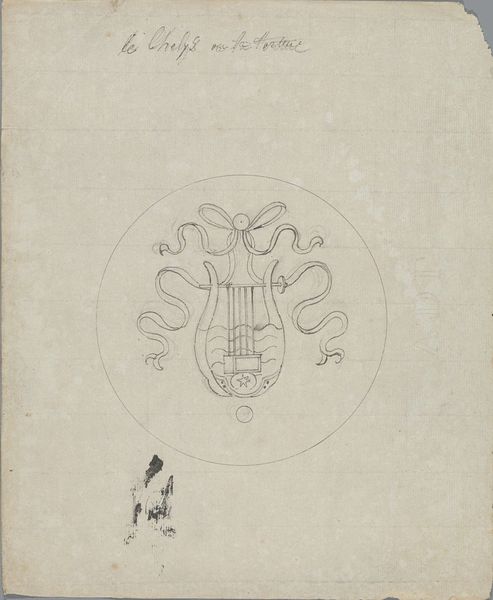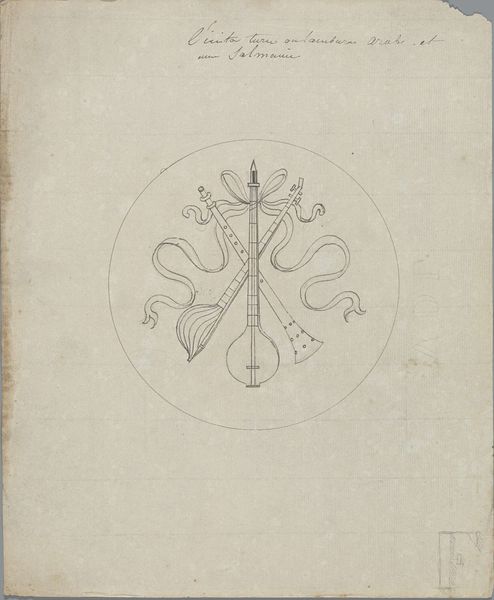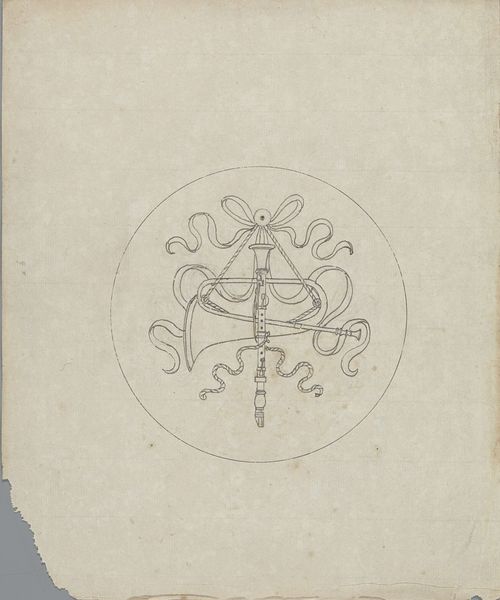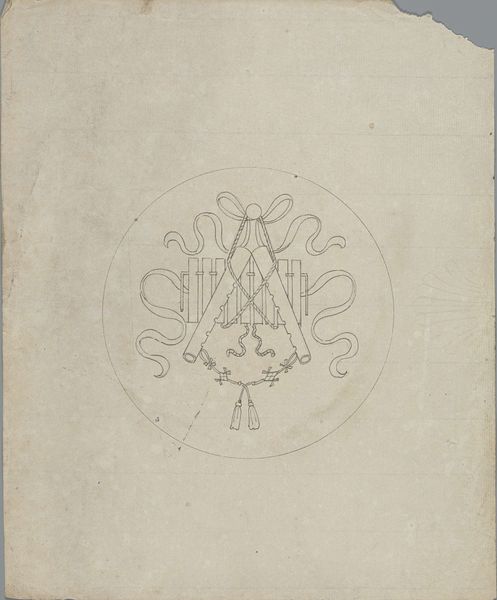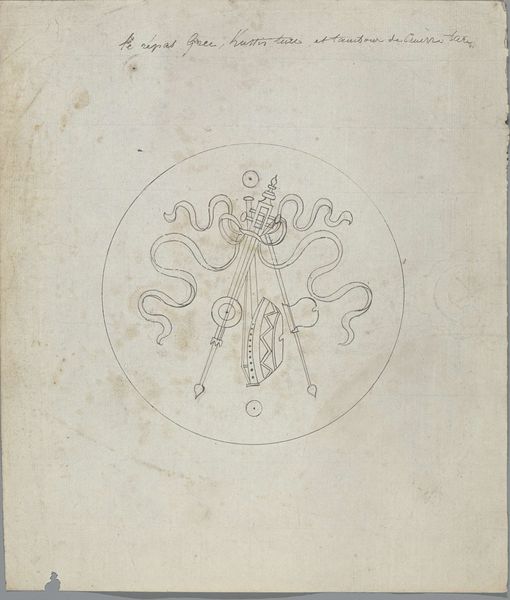
drawing, paper, pencil
#
drawing
#
paper
#
geometric
#
pencil
#
line
Dimensions: height 253 mm, width 208 mm, diameter 123 mm
Copyright: Rijks Museum: Open Domain
Editor: This is "Instrumens negres," a pencil drawing on paper made before 1828 by Pierre Félix van Doren. The composition feels very deliberate and symbolic; it looks like some sort of emblem, enclosed within a circle. How do you interpret this work? Curator: I see a visual vocabulary steeped in tradition, evoking emblems of nobility and secret societies. Consider the title, “Black Instruments,” against the backdrop of pre-1828 Europe. This could point to instruments of power, perhaps instruments used for specific ceremonial or theatrical function? The pencil line, the precise arrangement… do you notice the heraldic quality of the ribbon at the top? Editor: Yes, and the central figure does remind me of a stylized shield. It's topped with a bow, while there are elements that almost look like wrapped instruments or tools. Is this common for the time? Curator: Emblems like these served as powerful cultural shorthand. Before mass literacy, images were crucial for communicating complex ideas about lineage, loyalty, and belonging. The question is, what memories and associations were being invoked here? Does the composition follow specific codes? I am intrigued by how line quality enhances the work’s symbolic effect. Editor: So it is likely speaking to a specific community through a visual language, reflecting a particular shared history. It reminds me of fraternity imagery or coats of arms for old European families. Curator: Precisely. And by stripping it down to its barest essentials – pencil on paper – the artist invites us to decipher the message hidden within these elegantly rendered forms, and I believe also invites us to be part of an initiated few. What do you take away? Editor: That even seemingly simple sketches can be laden with layers of historical and cultural significance! I think it encourages a closer looking into historical, psychological, and cultural interpretations of visual symbol use in works of art.
Comments
No comments
Be the first to comment and join the conversation on the ultimate creative platform.
